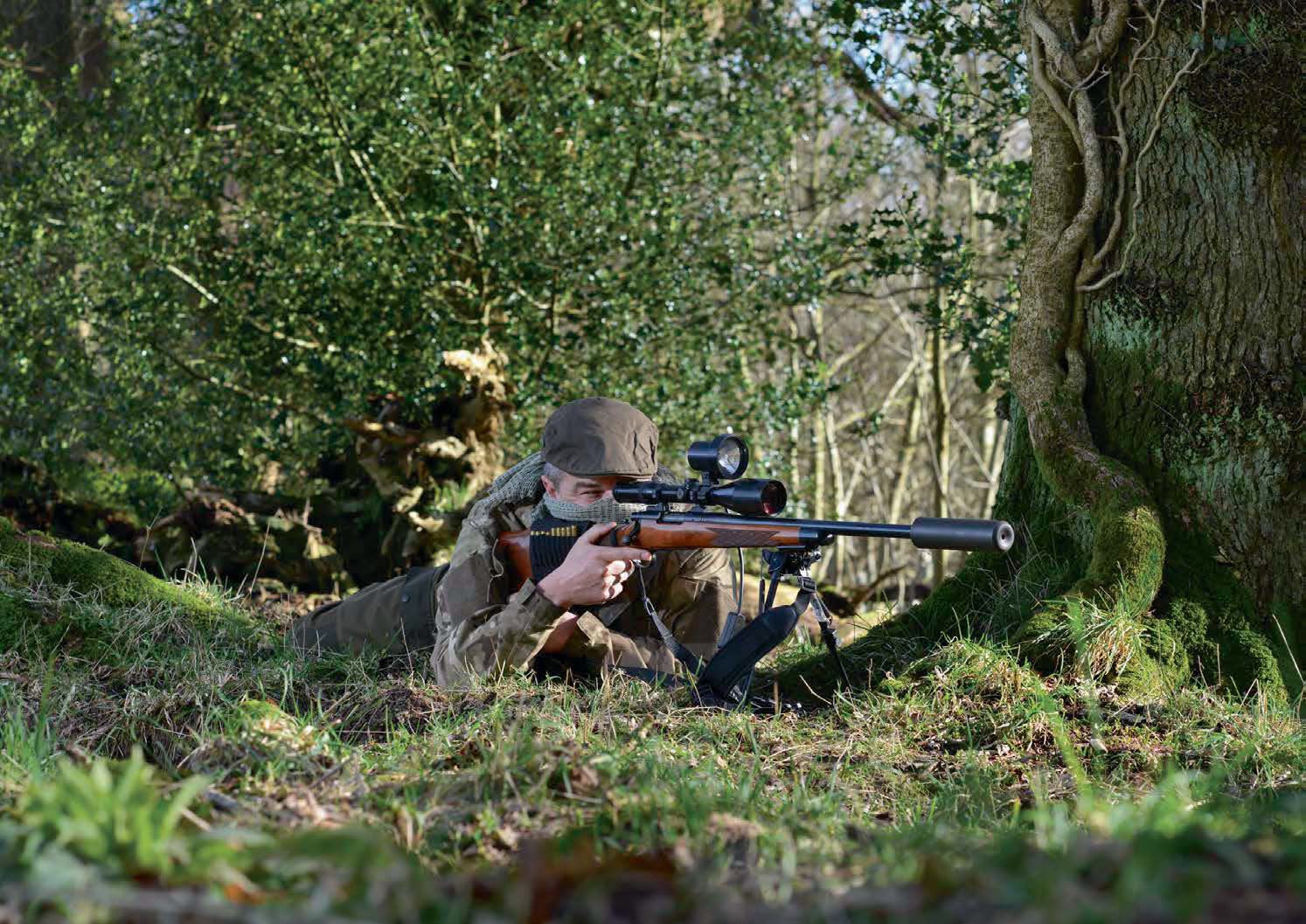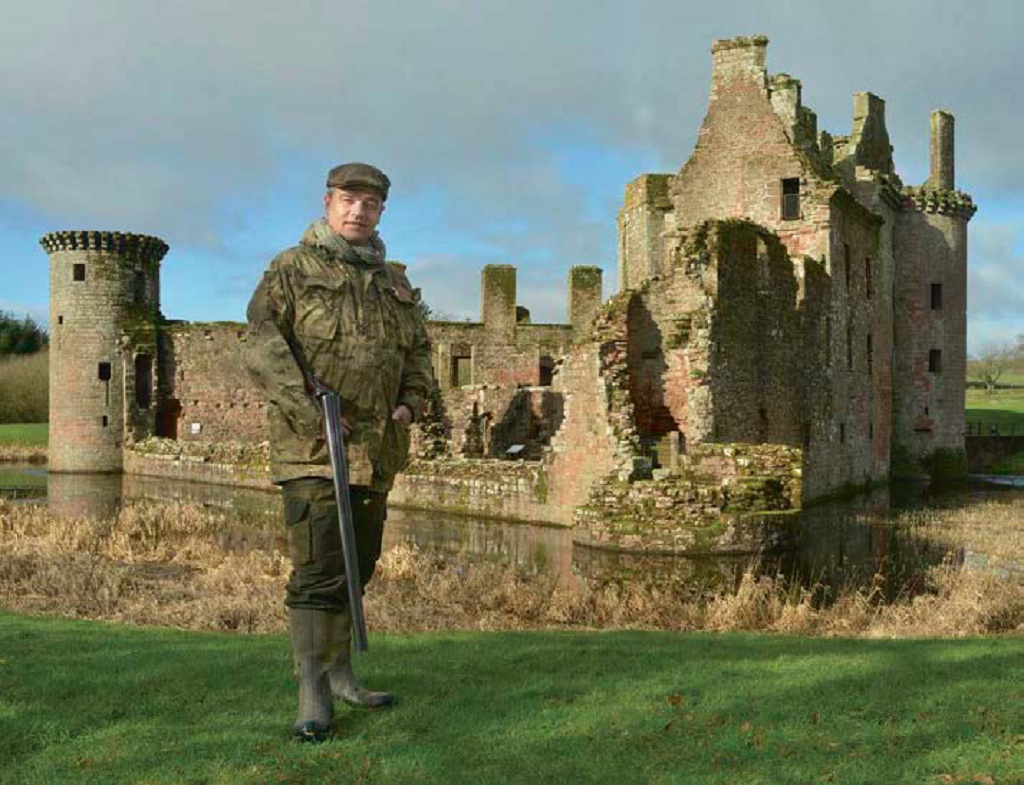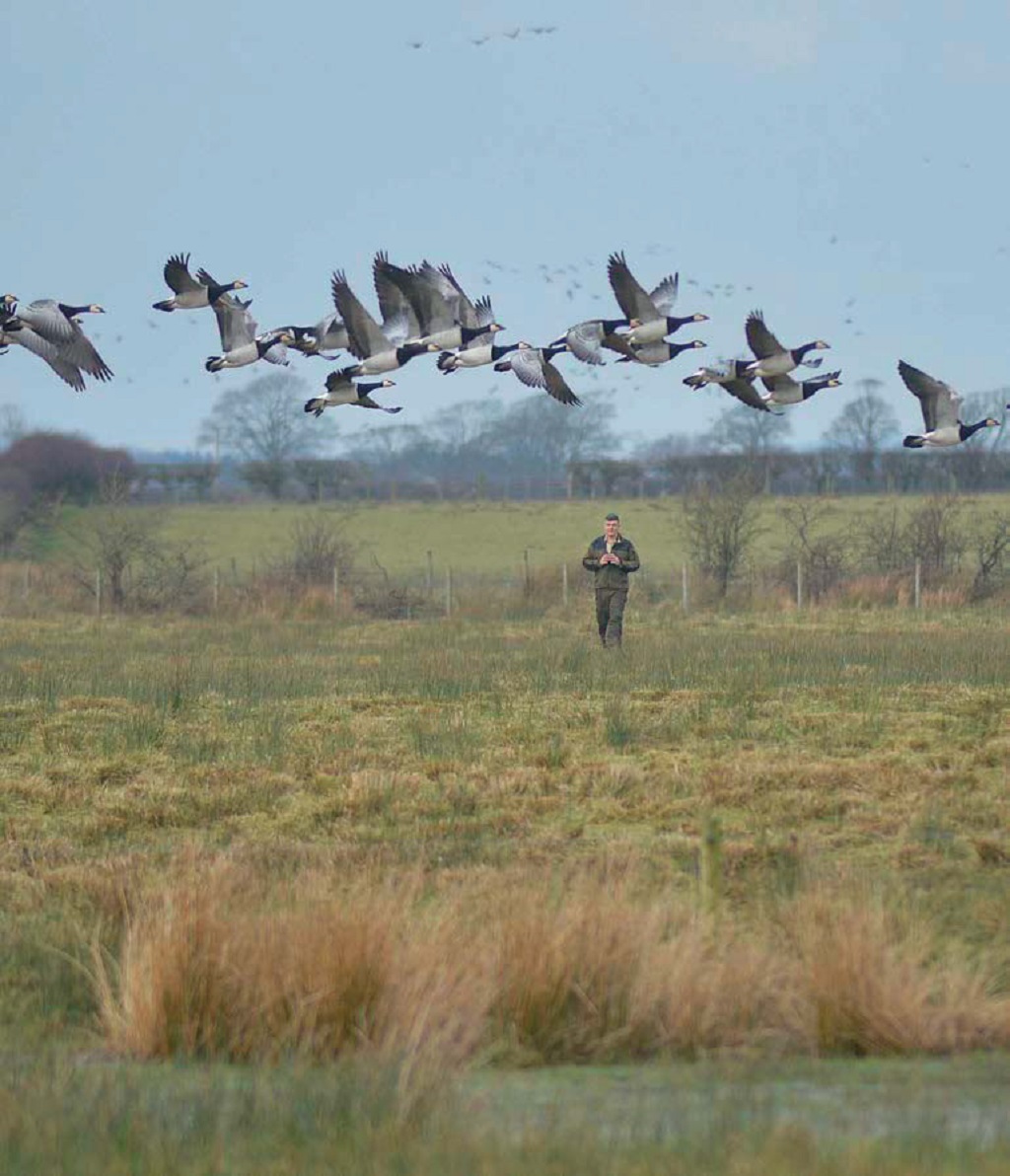
No haaf measures at the Caerlaverock Estate
The Caerlaverock estate is home to wildfowling, wildlife habitats and conservation, as well as an ancient fishing tradition.
The ancient woodland, mud flats and marshes, swirling tides and salty sands are just part of what makes Caerlaverock Estate in Dumfries and Galloway so special.
Owned by Lady Herries of Terregles, who is committed to ensuring that conservation, heritage and culture are protected in a modern, changing countryside, Caerlaverock is home to an unusually harmonious mix of man, beast and fowl. With tensions between these often conflicting entities widespread, Caerlaverock, which lies on the eastern bank of the River Nith, is living proof that hunters and conservationists can co-exist – a feat that has been playing out on the estate for decades.
‘Caerlaverock is in a unique position simply because we don’t run a commercial shoot,’ explains estate manager Robbie Cowan. ‘It’s a wild shoot. The estate has always been used as a wildfowling estate. We don’t rear birds, the shooting is all based around the geese and duck that arrive through the migrating months.’
While, together with partner agencies, the Game and Wildlife Conservation Trust is currently researching ways that shooting and conservation can co-exist with the 10-year Langholm Moor Project, geese populations and wildfowlers have both been thriving at Caerlaverock for almost 60 years thanks to a timely intervention by the 16th Duke of Norfolk, Lady Herries’ father, in the middle of last century.
By the early 1950s, barnacle geese coming to roost on the Solway estuary from Svalbard, a small island high up in the Arctic Circle, had dropped to crisis levels, with numbers barely reaching 400.
Recognising that something had to be done to protect the birds when they arrived back in Scotland, the Duke approached the government to offer part of the estate, in conjunction with the mudflats on the estuary, to create a nature reserve which would safeguard the geese from excessive shooting and disturbance, and in 1957 the Caerlaverock Natural Nature Reserve was born.

Wildfowling takes place from September to February but Robbie Cowan also has to control vermin and stalk roe deer
As well as protecting the geese – which, with last year’s count topping 40,000, proved an unbridled success – the Duke’s aim was to manage nature conservation alongside the seemingly conflicting interests of farming, fishing, wildfowling and bird watching, and managing activities for both the conservation and enjoyment of the natural heritage remains key to the continuing success of the Caerlaverock NNR. ‘It’s a great vision that the Duke had way back then,’ Cowan says.
‘Not just with the geese, but he could see future conflicts and set out a plan to make sure everything worked in harmony. It’s a great example, even today.’
When setting up the nature reserve, the Duke included a provision that wildfowling must always be allowed to continue, in a monitored, sustainable fashion. Not only must it be allowed, it should be welcomed – and free.
‘That was his condition,’ says Cowan, whose family connection with Caerlaverock dates back to 1922; his father, grandfather and great-grandfather were gamekeepers on the estate.
‘He wanted free wildfowling to take place and that still continues today. Scottish Natural Heritage provide parking, footpaths, a warden, all the boundary maps and permits. It’s all there free of charge, which is rare in this day and age, but it will remain that way here because that was a key foundation in the formation of the reserve.’
Organised shoots are for friends of the family, many of whom have been coming to Caerlaverock for years, while local and visiting wildfowlers shoot on the foreshore by permit from 1 September to 20 February. Scottish Natural Heritage manage the numbers so there isn’t too much disturbance – it is a nature reserve after all.
But with wildfowling ‘in the blood’ of locals, the Caerlaverock Panel authorises up to 80 season permits to those resident within 18 miles of the reserve on the Scottish side of the Solway Firth, while short-period permits are available to all other wildfowlers, who flock to Caerlaverock from far and wide.

Robbie Cowan, a third-generation keeper on the estate, in front of Caerlaverock Castle
‘The Solway is famous for wildfowling so people come from all over the country and we get foreign visitors as well,’ Cowan tells me.
‘We’ve had Americans, Spaniards, Italians. It’s very beneficial to the local economy during the winter when it’s a bit quieter in terms of the tourist trade, because we have a steady number of wildfowlers coming to the area.’
Another sporting tradition keenly preserved at Caerlaverock is haaf netting; an ancient form of fishing, which dates back to the Vikings. The technique is over a thousand years old and has barely changed during that time. Very popular among locals for centuries, haaf netting had been tailing off since the 1990s.
‘When I took over from my father we were down to 12 haaf netters, it really wasn’t sustainable,’ Cowan admits. ‘The run had slowly been getting later in the year – the season only runs from the end of February until 9 September, so it was affecting the amount of fish we were catching. One of my first roles was to try and get the haaf netting popular again. We managed to get the tickets back up to 30 by opening up the area and we saw an increase. It revitalised itself, which was great – we could pay the rates and keep this ancient form of fishing going.’
But with the government implementing 100% catch and release for salmon from next season on ‘struggling’ rivers, including the Nith, the ancient fishing form is once again under threat. ‘It’s bound to tail off again with the catch and release for salmon,’ Cowan says.
‘We’ll probably lose around 25 tickets, which would leave us with just two men fishing.’
The move essentially renders haaf netting on the estate financially unviable, but despite this, it’s set to continue. ‘It would have been very easy just to pack up and close the fishery down, but we have to remember that this is a thousand-year-old fishing, an important part of our culture and local heritage,’ insists Cowan. ‘It’s a big part of family life in Caerlaverock, the knowledge of how to fish this way has been passed on for generations, so we’ll do everything we can to keep it going.’
It’s galling, though, given that the haaf netters are already mindful of maintaining fish stock, and go over and above to ensure they’re maintained.

41,000 barnacle geese were counted in 2015
‘We’ve been leading the way in terms of conservation,’ Cowan says. ‘We’ve voluntarily implemented conservation measures right through the board. We return all sea trout over 3lbs in weight, for example as the bigger sea trout are normally the hens which carry the eggs, so you want them up the river.’
The Nith District Salmon Fishery Board has always supported the haaf netters, a unique relationship compared to other rivers in the country.
‘It’s something that we’ve always been proud of,’ Cowan says. ‘It’s sad that it’s come to this to be honest. I think the government has made a huge error, and I think that will come to light in the next year or two, and not just for netting; the angling community in general will suffer and you’re going to lose the people who know and care about salmon.’
Looking ahead to the inevitable changes that the Land Reform Act, the Wild Fisheries Review and more access to the countryside, will bring, Cowan insists that the age-old Caerlaverock ethos, where land owners and public agencies work side-by-side, will continue.
‘We’re going to have to evolve with the times, but we must also stay true to what we’ve always been, and that is to ensure that the wildlife is managed and the habitats are looked after, but also that the culture and heritage is maintained for future generations to enjoy.’
(This feature was originally published in 2016)
TAGS

